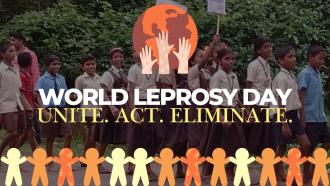
Reproductive tract infections (RTIs) are extremely common among women that they are reported to affect one third of women of reproductive age around the world, according to a report by the World Health Organization. Sexually transmitted infections (of which RTI is a significant contributor) are also classified among the “top five disease categories,” by WHO. The risk of women contracting RTIs are high in rural India, where, in the absence of toilets in villages, access to sanitation is still limited.
A group of public health researchers, headed by Dr. Kelly K. Baker at the University of Iowa College of Public Health, recently studied 3,952 girls and women from two rural districts in India to understand the relationship between hygiene practices and self-reported RTI symptoms. The researchers studied WASH practices – defined by access to water, sanitation, and hygiene – to understand whether the women transitioning through different reproductive stages are resorting to unhygienic sanitation practices, increasing their risks of RTIs.
“RTIs are a grossly unreported disease and socio-economic factors, education, and WASH risk factors may differ between women seeking care at a health care center, versus the broader population, especially for rural women with the lowest levels of WASH worldwide,” the researchers say in the report. The study and its results assume significance since very few published studies explore the connections between water, sanitation access, related daily hygiene practices (not specific to menstruation or sexual activity) and their effect on the risk of contracting RTI disease.
The study was conducted between September 2013 and March 2014 in two rural districts of Odisha, namely Khorda and Sundargarh. The researchers say that these two unconnected districts were chosen because the region has particularly low levels of water and sanitation coverage, and high maternal and child morbidity (diseases) and mortality (death).
The researchers found new evidence linking WASH access with self-reported RTI symptoms in girls and women falling under different reproductive life stages in rural India. The study also concluded that WASH practices of girls and women varied across reproductive life stages. However, the associations between WASH practices and RTI symptoms were not influenced by various life stage status of these women.
According to the study, “self-reported symptoms of RTI disease were less common in girls and women with access to a latrine (vs open defecation) and lower walking times to a bathing location.” Crucially, symptoms were less common among those who reported bathing with soap water versus women who reported washing hands with soap after defecation.
Another crucial aspect dealt in the study is related to the stress women and girls in rural India undergo on a daily basis to find a safe place to defecate in the absence of toilets. “We referred to various studies that found women without access to a latrine reported higher levels of stress and may change how often or how well they practice hygiene behaviors as a result,” says Dr. Baker. This led the researchers to hypothesize that these women’s unsafe hygiene behaviors are perhaps driven by their experience of stressful situations.
“The journey to find a safe, private location for defecation and urination is often stressful and physically challenging for women, and can require walking long distances through unsafe terrain while carrying water for cleansing,” the report adds. This forces them to compromise on hygiene. Women may attempt to reduce this stress by carrying less water for genital washing or bathing less frequently, which has been a risk factor for RTIs in other studies.
According to the researchers, this is the first study to structure analysis of risk factors for RTIs based upon a prior hypotheses that environmental exposures for women in settings like India can be moderated by social life stages. The report is hopeful that improving access to sanitation for women in rural areas may help curtail the rate in which RTI affects them. “If water and sanitation access is an important determinant of RTI risk in women, then global efforts to improve women’s water and latrine coverage may reduce the burden of RTIs among the most vulnerable women worldwide,” say the researchers.






